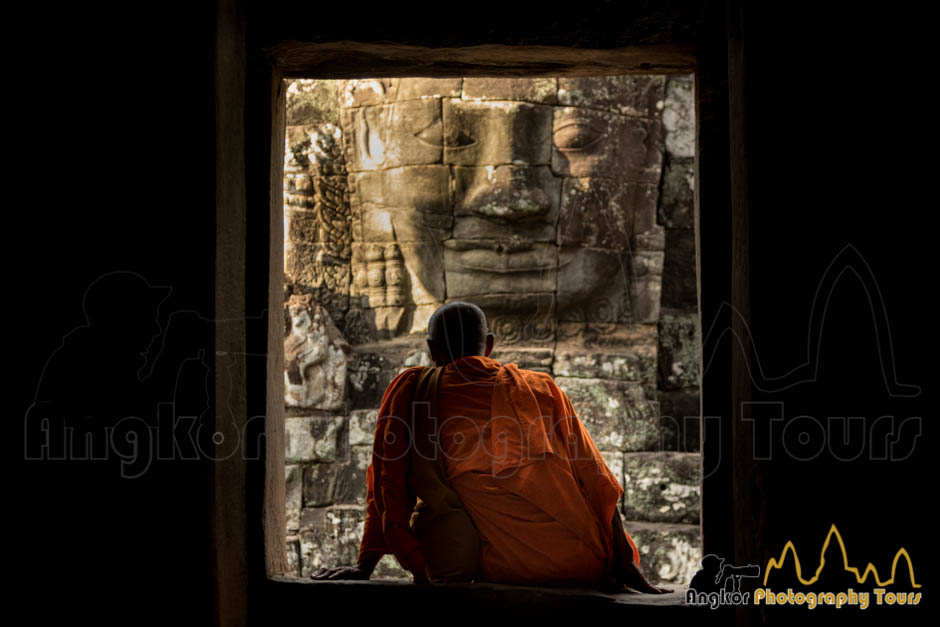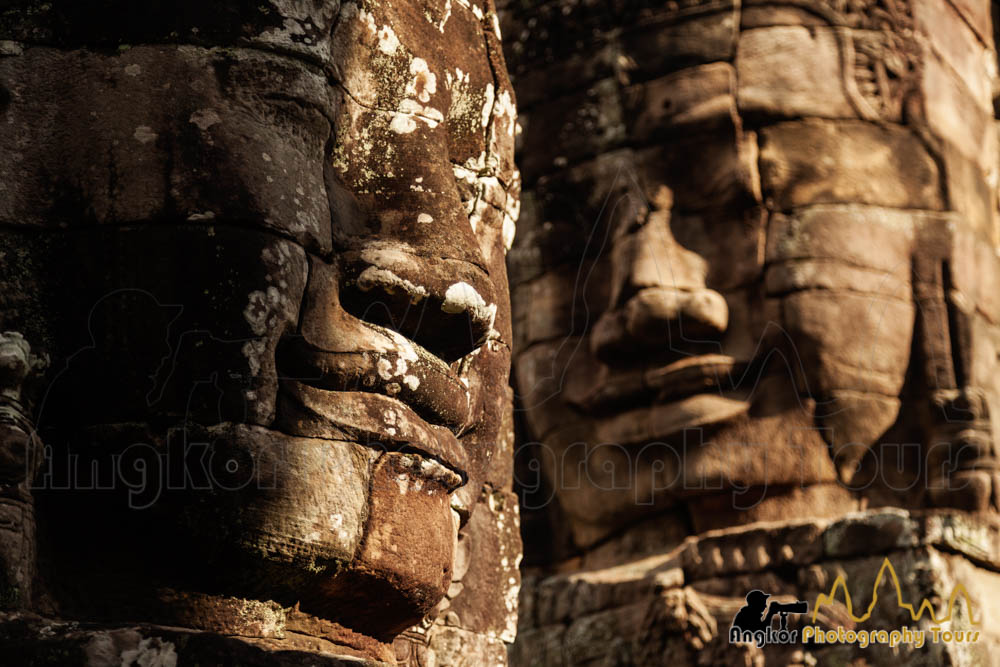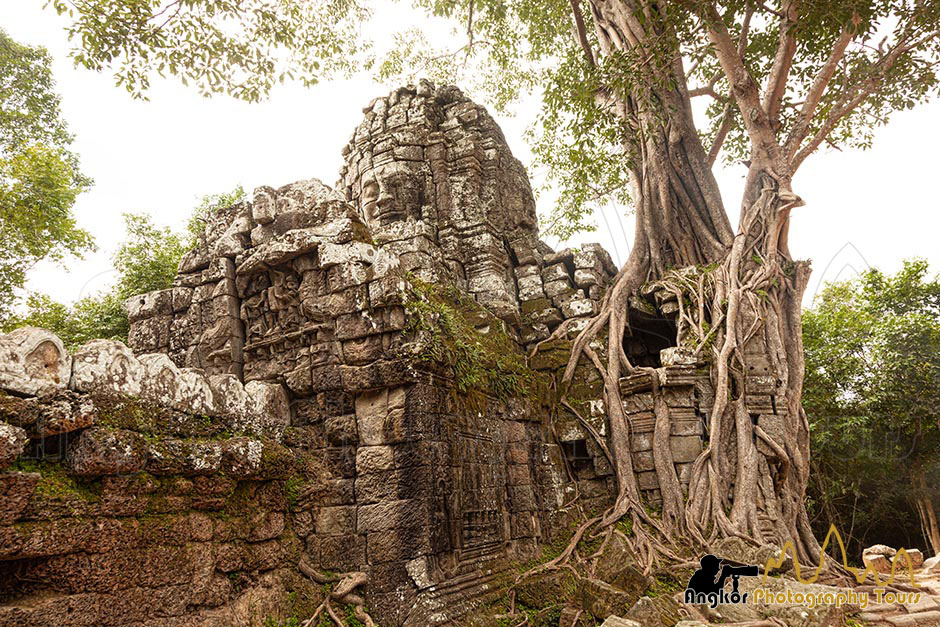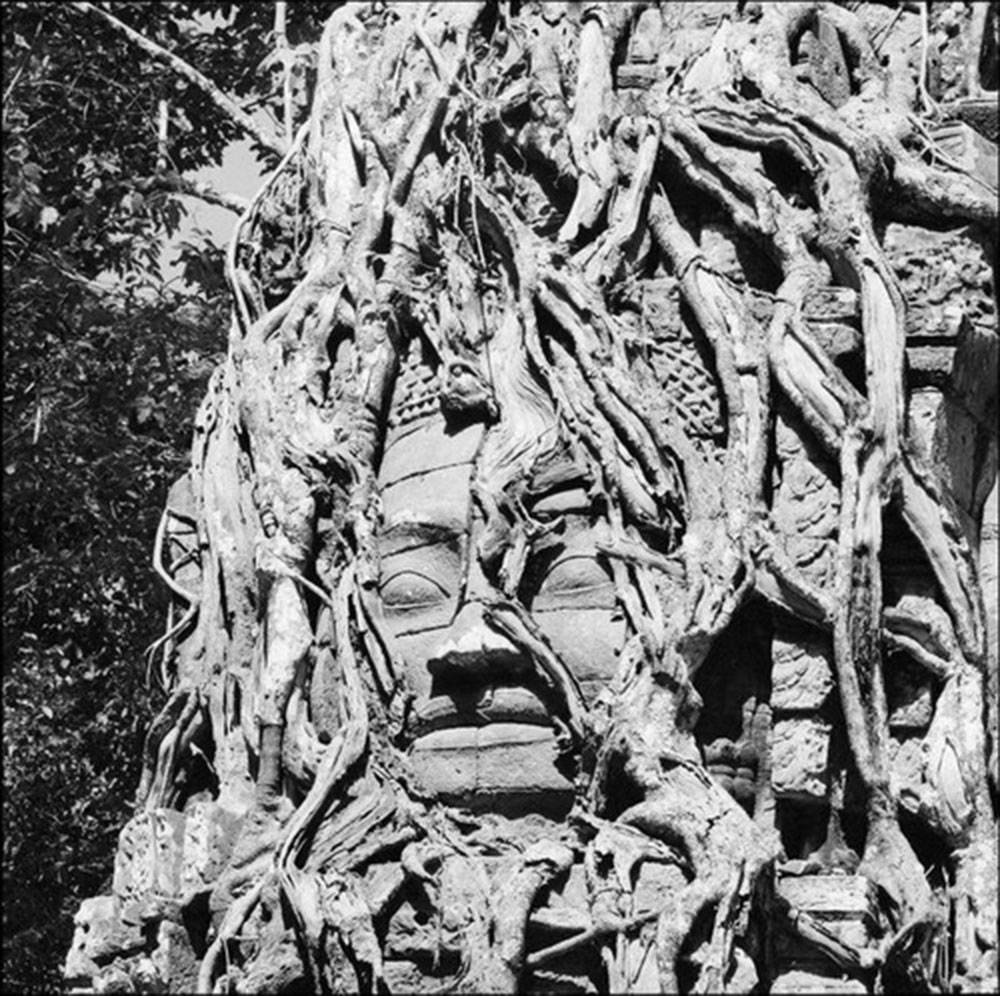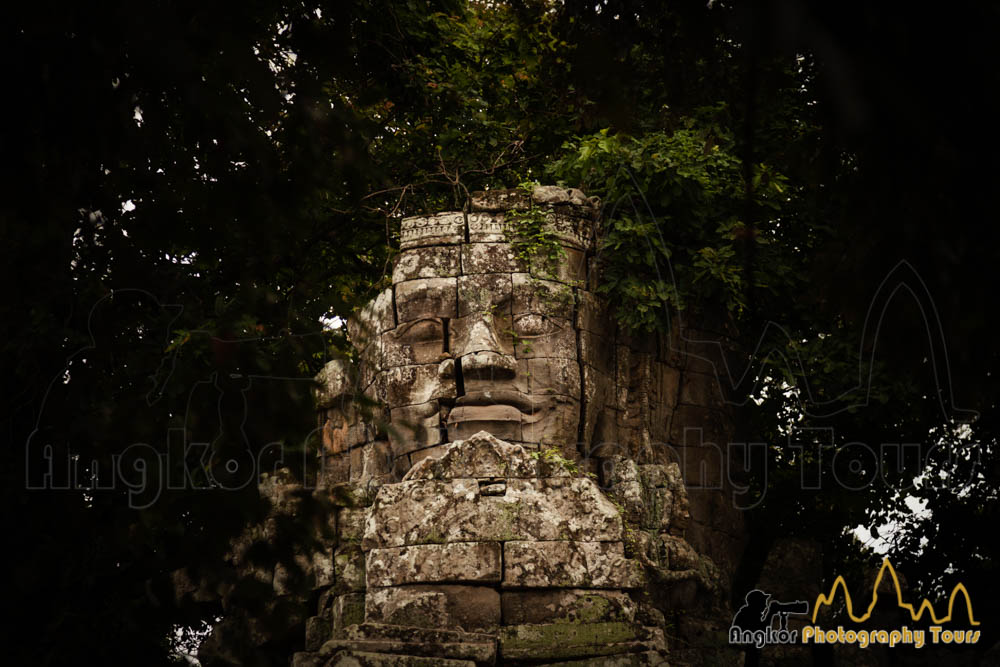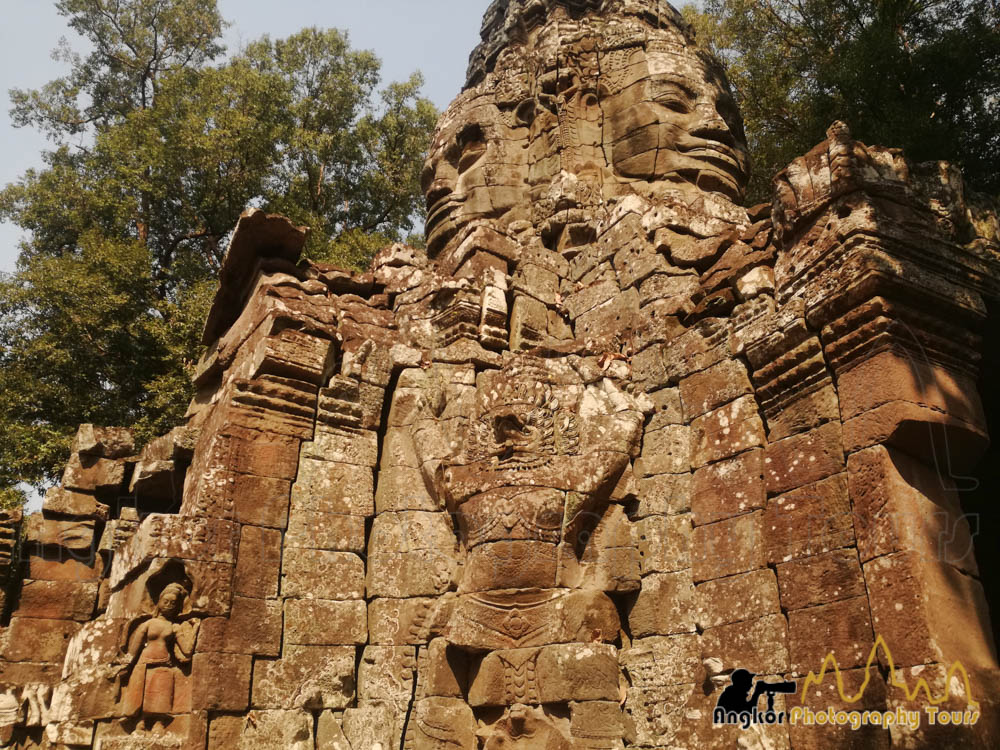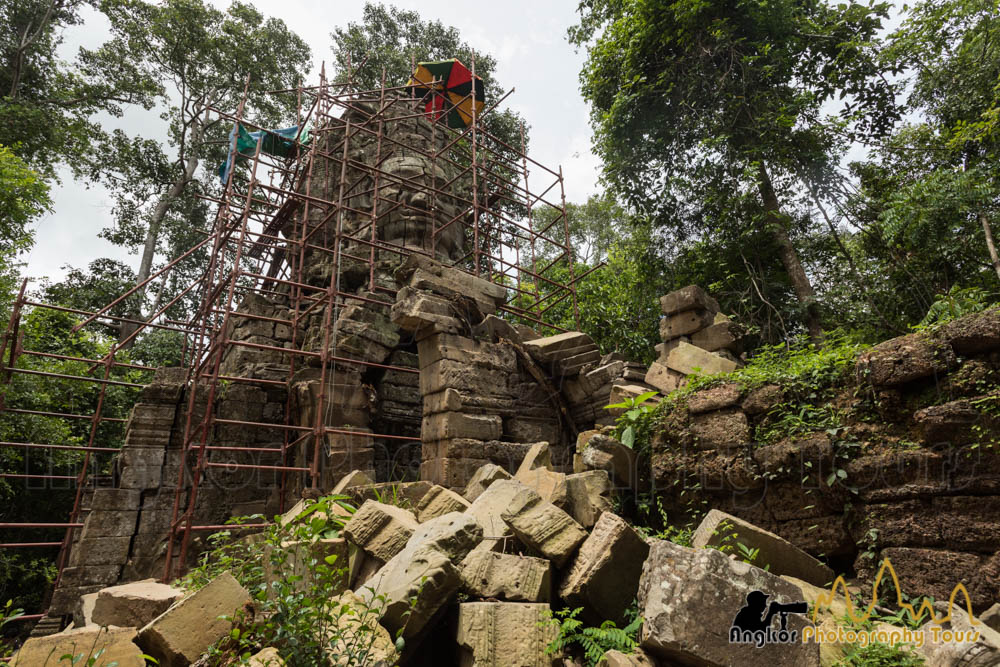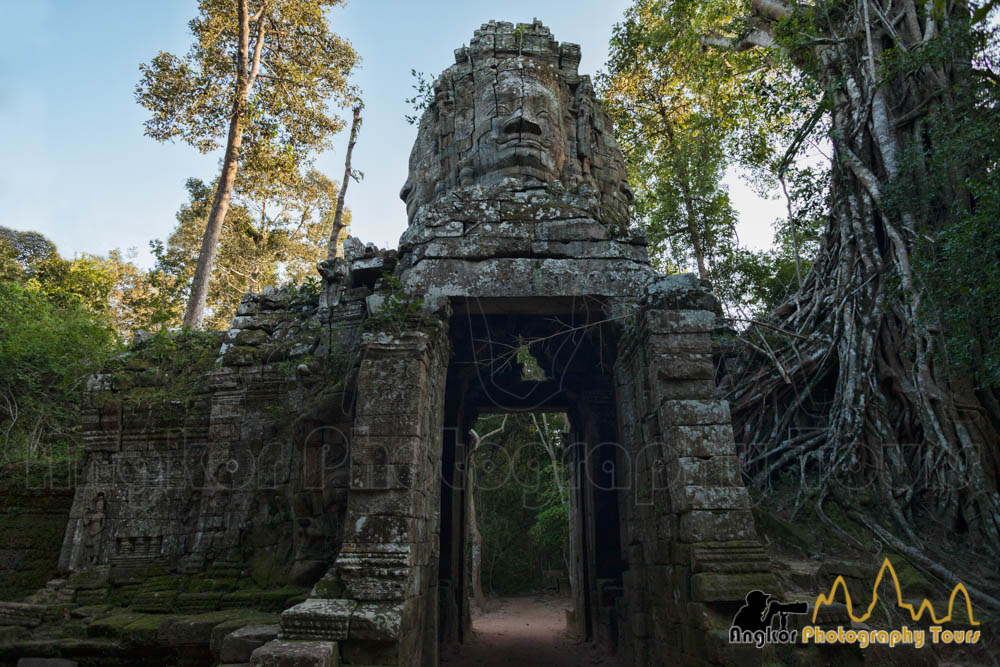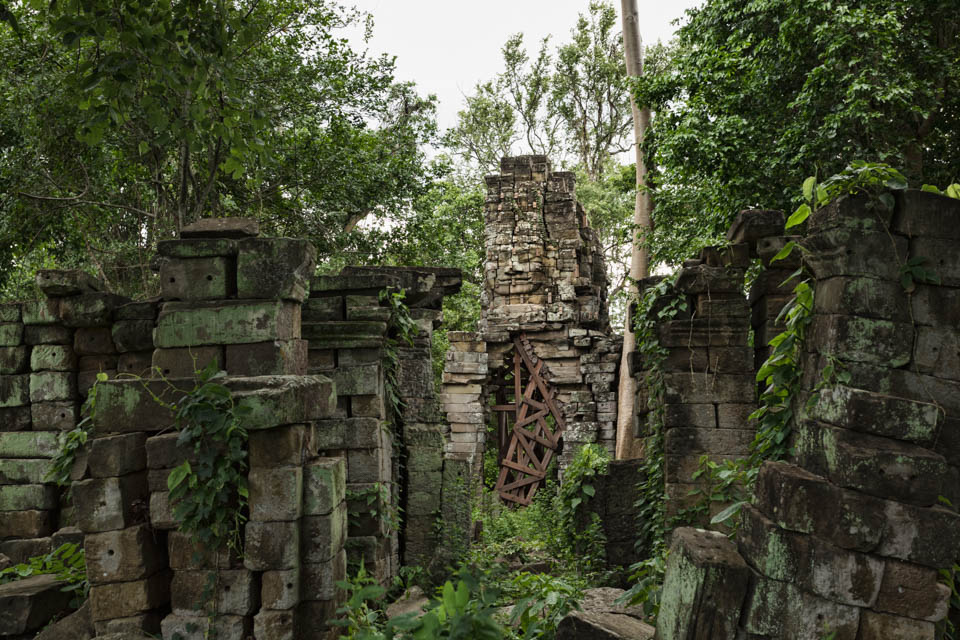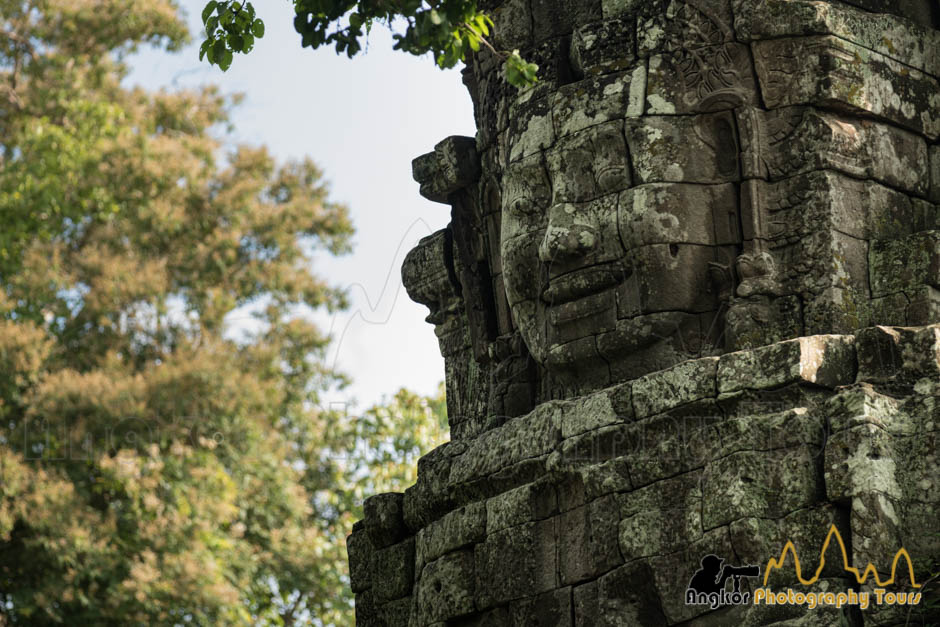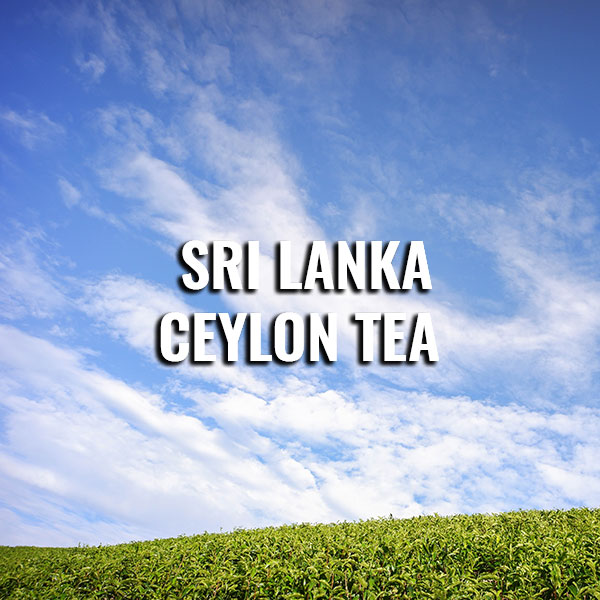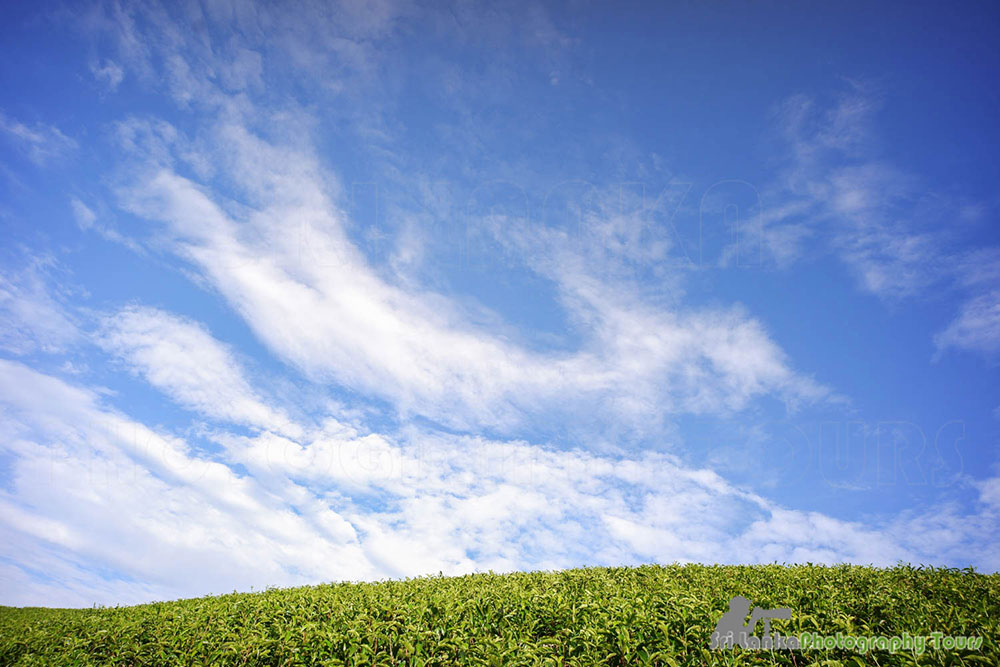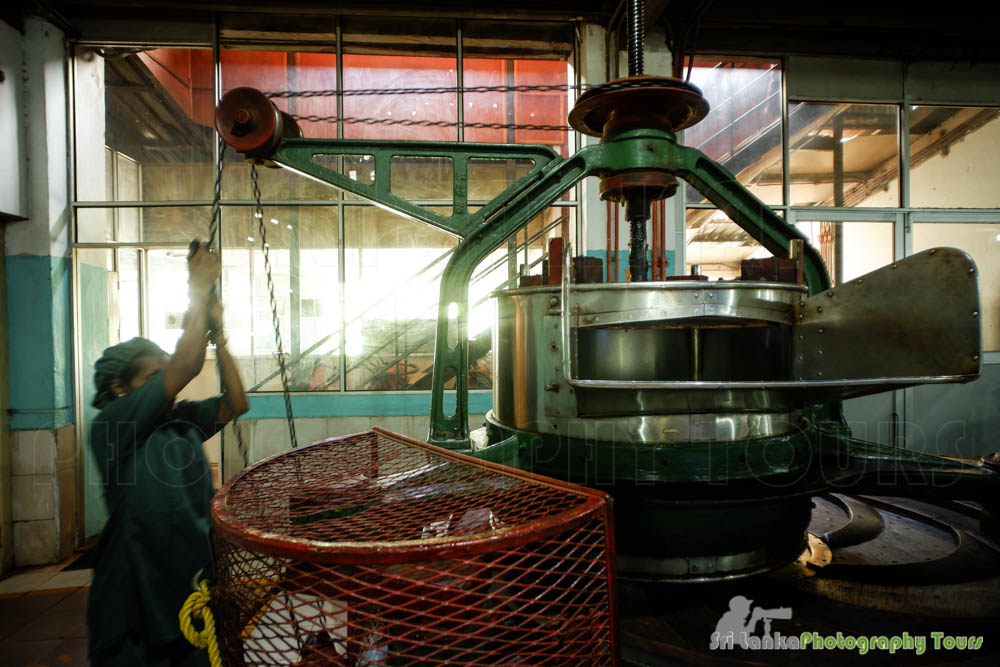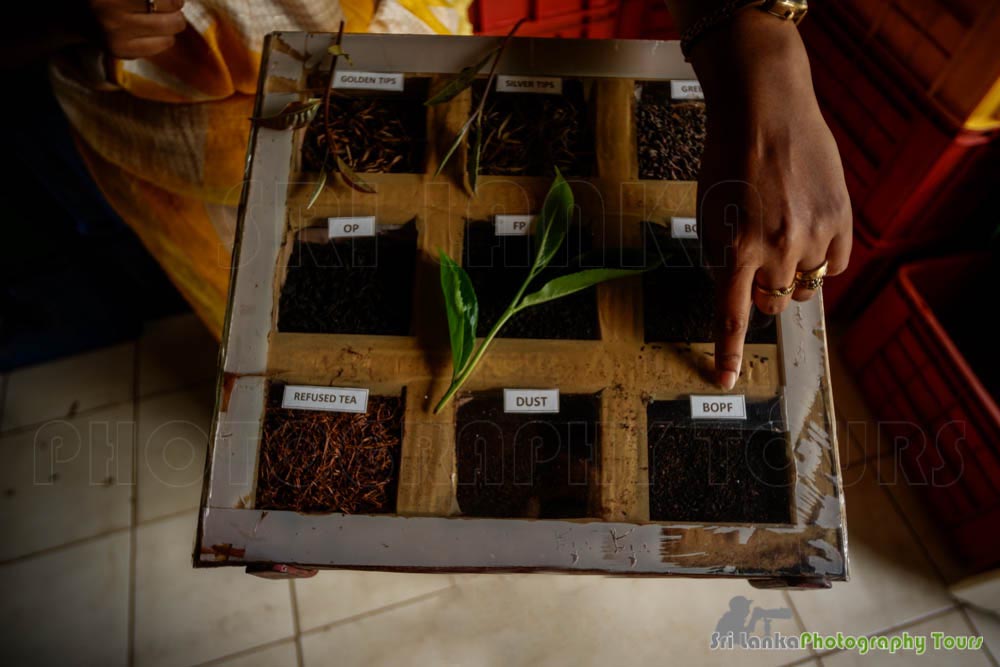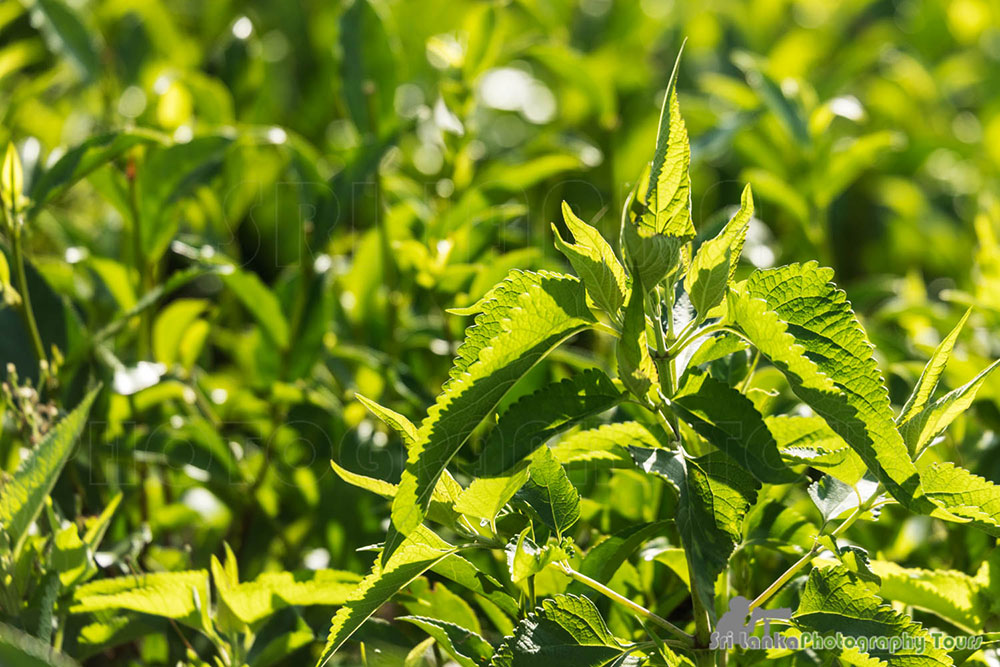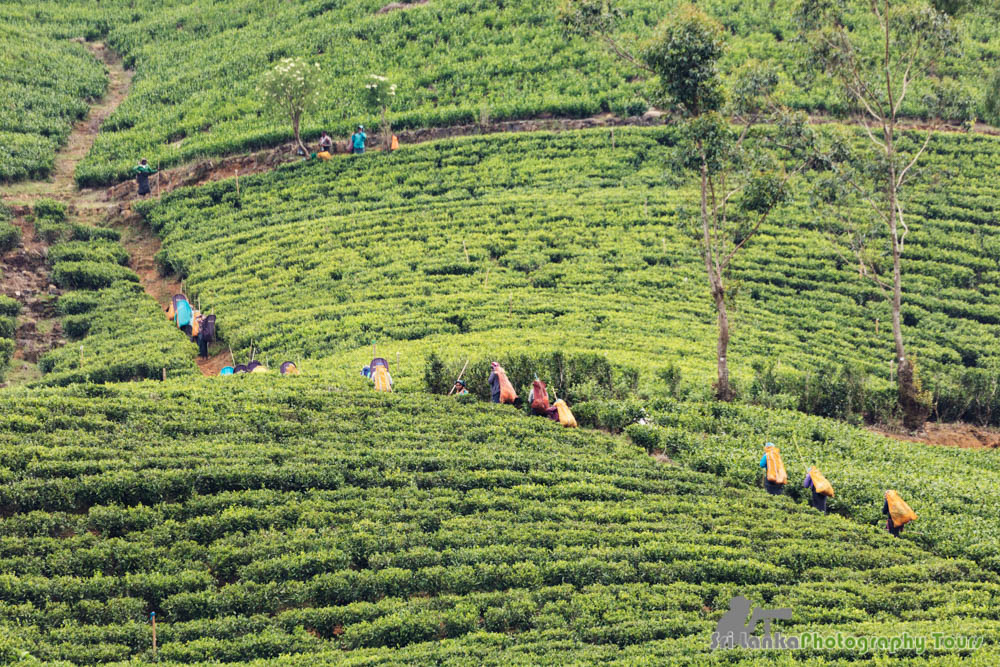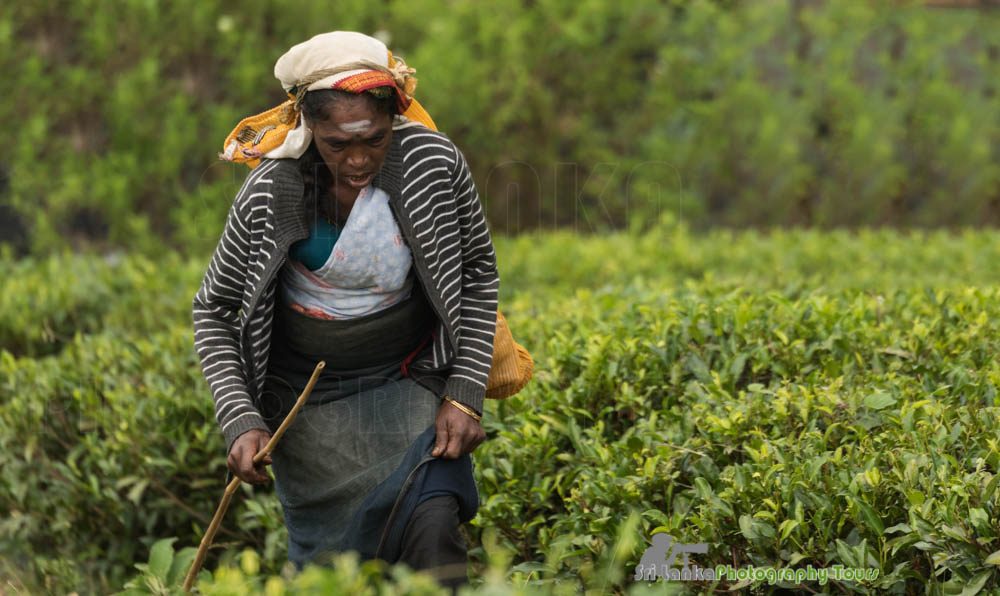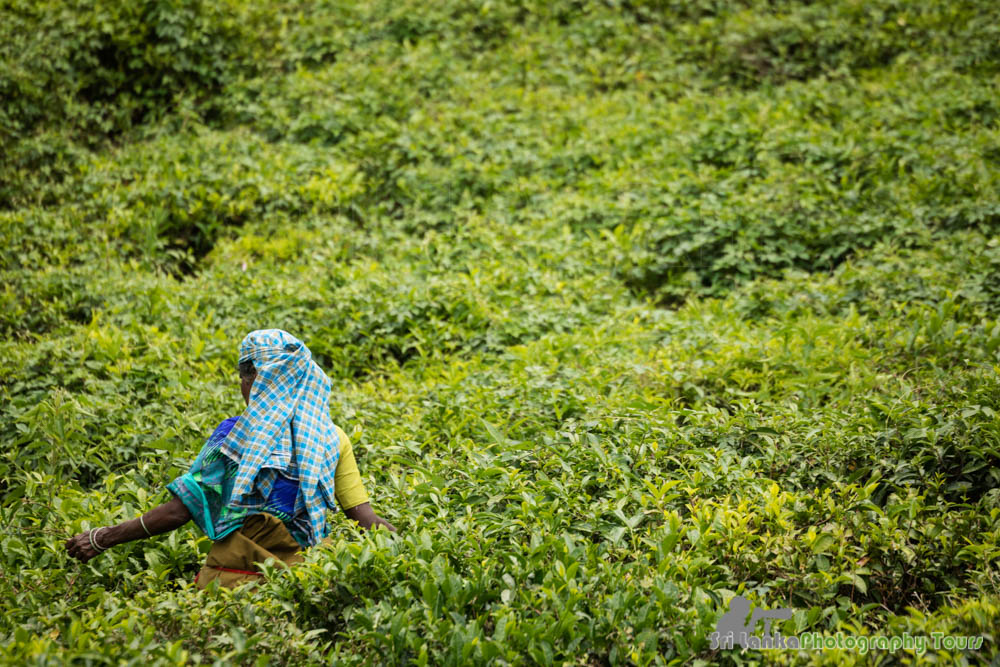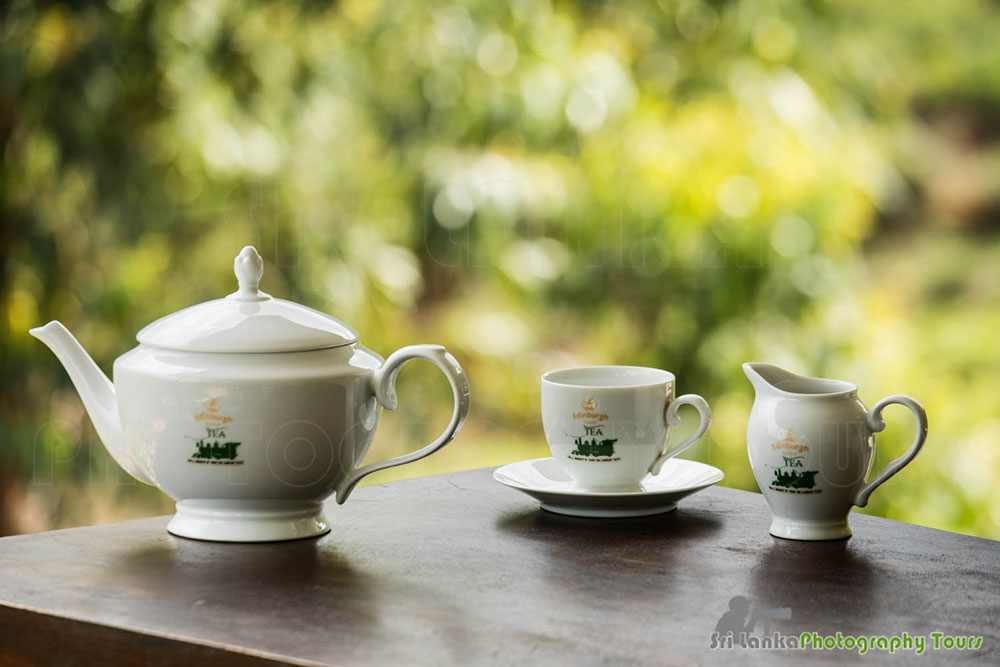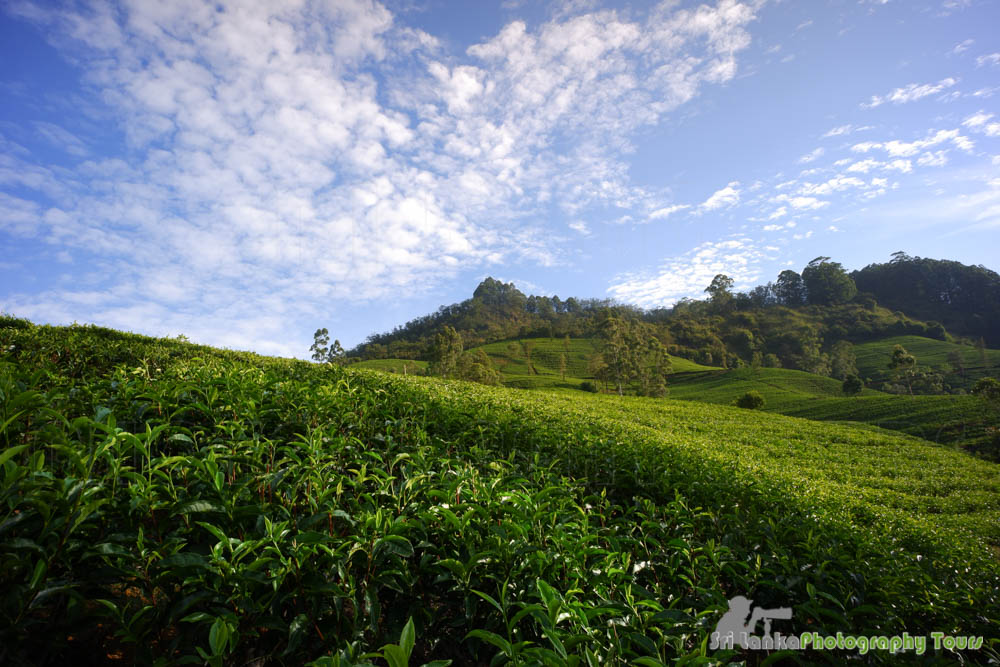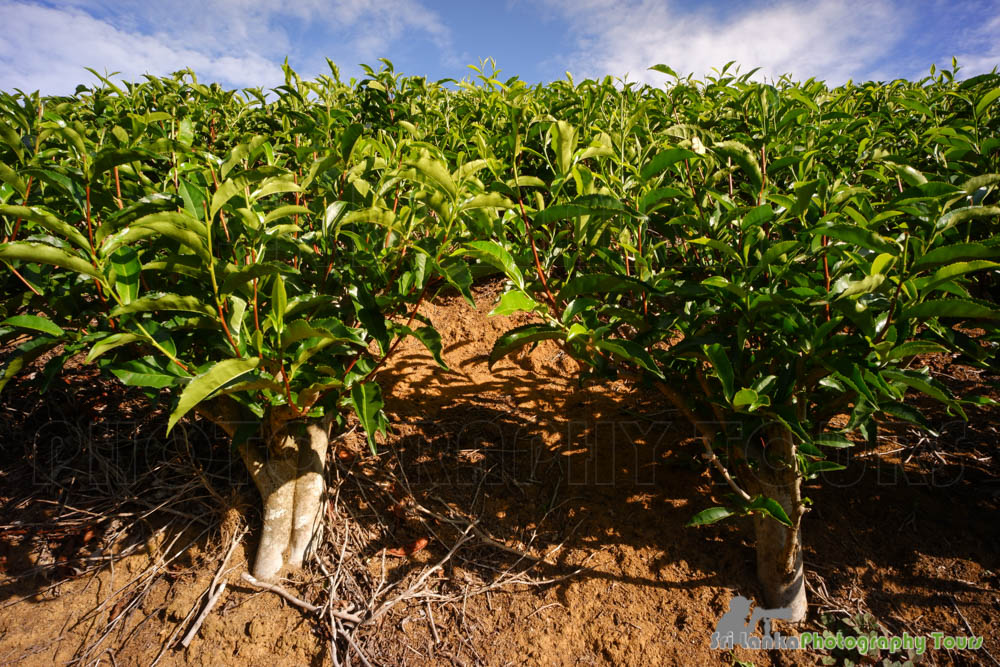To this day, the meaning of these faces is still a mystery: some authors are connecting these faces to Shiva, Brahma, Avalokiteshvara, Buddha or to the King Jayavarman II himself.
So how many faces can be found in Cambodia? 300 is probably a good estimate and with Bayon alone counting for 200 of them. These faces can be found on the side of towers of temples in Angkor and beyond, some in very remote area. If you want to visit all the sites with face towers, it is a long journey that we take you hundreds of kilometers on both side of Angkor. We found that face towers are the most spectacular and enigmatic in remote temples where they are still surrounded by jungle and hidden away from tourists. In Angkor, the best way to see the face towers is to join us for a day of adventure with e-bikes.
BAYON TEMPLE (JAYAVARMAN)
Face towers temple by design, Bayon has an unique and imposing architecture. Whether you look at it from far or close from the upper terrace, the faces carved in sandstone are unique and best seen early morning or the evening at the golden hour.
Bayon temple is the with the highest concentration of face towers and is also the top 3 visited temple in Angkor. Many photography opportunities exist from the upper terrace as it is possible to frame the faces with many compositions. It then become quite a game of composition for photographer to find new angles and play with the window openings.
Note: From January 2020, the upper terrace of the Bayon temple will be closed to the public due to the start of a restoration undertaken by Japanese Government Team for Safeguarding Angkor (JASA). The exact duration is not known but we can expect it to last few years (3 to 5 years) as it is a major archeological work
GATES OF ANGKOR THOM
Angkor Thom is an ancient fortified city of 3 square kilometers with five entrances and .surrounded by a moat It was also the last capital of the Khmer Empire. Each gate has a 20-meter tower with 4 faces and 4 three-headed elephant. All 20 faces are intact but n the the last 5 years, some faces have been secured by metallic cables.
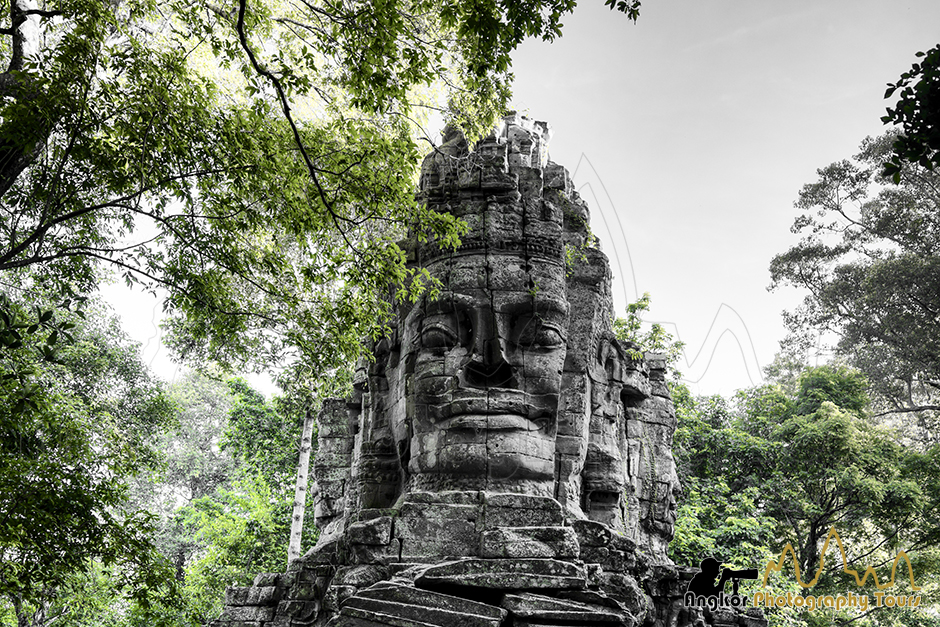
Face carved on Angkor Thom West Gate in Angkor Thom Cambodia. Angkor Thom was the last capital of the Khmer empire during the 12th century.Selective color
TA SOM TEMPLE
Ta Som is a small temple located just east of the Preah Khan Baray or (Jayatataka) with two face towers. The East gopura is photogenic although the strangler fig does not grow directly around the faces. 50 years ago when the number of tourists were very low, the western gopura was one of the most famous spot in Angkor with a tree growing around one face. Unfortunately the tree was cleared up in the 60’s.

Photo credit: Luc Ionesco.
BANTEAY KDEI TEMPLE
Few hundred meters from Ta Prohm, lies the less visited temple of Banteay Kdei (the citadel of chambers ) with four entrances, most visitors are familiar with the eastern and western ones.
TA PROHM TEMPLE
Built in the 12 century by Jayavarman VII and dedicated to his father, Ta Phrom is one of the most famous temple with Angkor Wat and Bayon, Ta Prohm has four entrances with tower faces. The eastern entrance gate is partially collapsed and unfortunately do not have any standing faces. The western is intact but the most interesting one is the less visited northern entrance. At the end of 2017, a side of the tower collapses as a tree holding the structure went down because of a landslide. The gate was partially restored in June 2018.
Northern gopura before the landslide
BEYOND ANGKOR
BANTEAY CHHMAR TEMPLE
Banteay Chhmar is a large temple complex in Banteay Meanchey Province, nearby the Thai border. Research has shown that Banteay Chhmar had originally 28 face towers, but because its remote location it was not saved from the jungle like Bayon at the beginning of the 20th century and many structures collapsed in the last 100 years. Its proximity to Thailand made it also a target for looting. Today, some beautiful face towers remain in the temple itself and in its satellite temples. To read more about Banteay Chhmar please have a look at our blogpost.
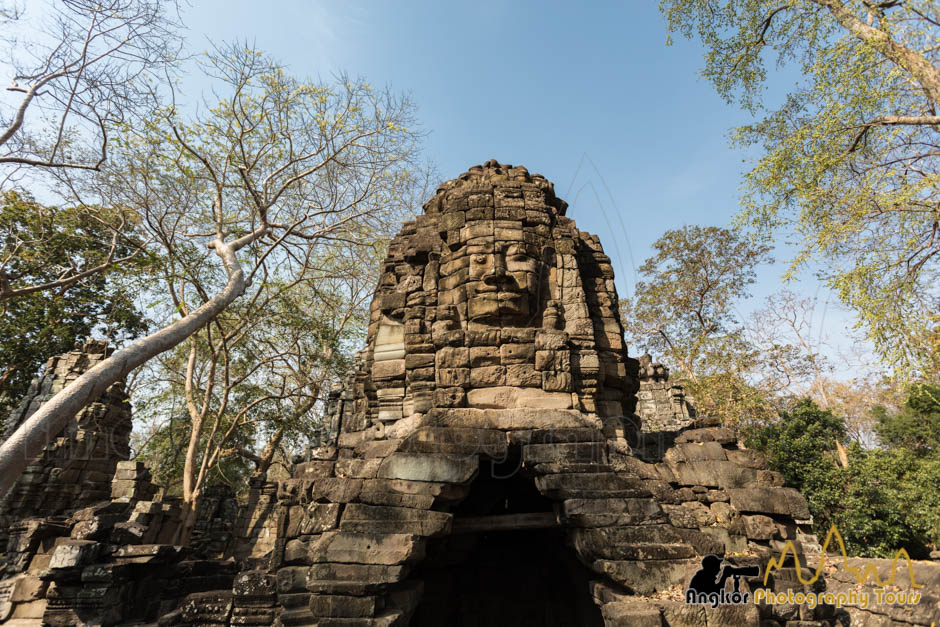
face tower in banteay chhmar temple
PREAH KHAN KOMPONG SVAY
Preah Khan is probably one of the most remote Angkorian temple built under the reign of Jayavarman VII. This huge complex has only a small temple with a face tower. To learn more about this temple, please have a look at our blog entitled the enigmatic temple of Peah Khan of Kompong Svay.

